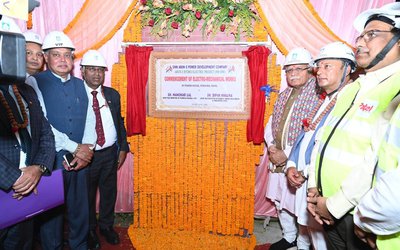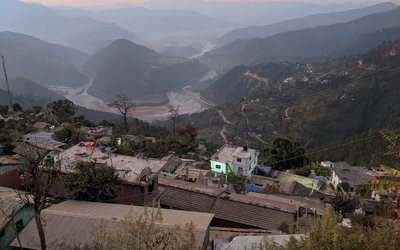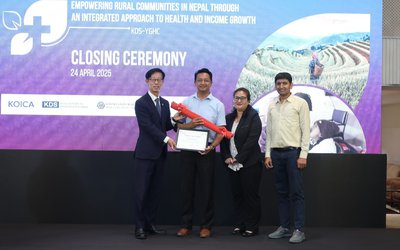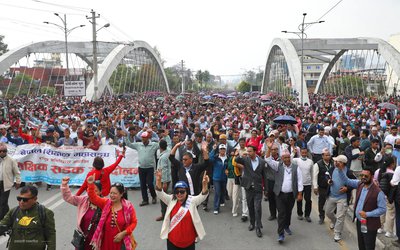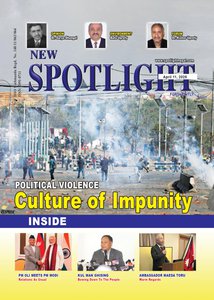
By Allan Dow, Regional Communication Officer
Bangkok, Thailand – On World Milk Day (1st June), FAO is highlighting the nutritional benefits of milk, for both young and old in the Asia-Pacific region, and the importance of dairy production to the livelihoods of millions of small holder dairy farmers, across the region.
Milk is an excellent source of energy, fats, high-quality protein, vitamins and minerals critical for growth and development in children. In Thailand, a Mahidol University study of school milk programs found that students in these programs consumed more energy, protein and Vitamin B12 than a typical diet in Thailand provides. Another study by Thailand’s Kasetsart University found that children in the program were taller than their peers (who weren’t in the program).
Additional health benefits of milk include stronger immune systems, helping to prevent illnesses such as hypertension, dental decay, and respiratory problems. It is because of this richness in protein and micronutrients in milk that FAO has long promoted the consumption of one glass of milk per day for every child - a message echoed nationally by many governments in the region. But it’s not only children that can benefit from drinking milk.
Milk can also help prevent bone loss and fractures among the aged
“It’s long been known that the consumption of milk can be an effective treatment for child undernutrition. But there is also some evidence, from FAO and other researchers, that introducing regular consumption of milk to older women and men in this region can be beneficial to those who have habitually low calcium intake which can lead to bone loss,” said Vinod Ahuja, an FAO Policy Officer based in Bangkok.
An Asia Pacific Regional Audit done by the International Osteoporosis Foundation has concluded that the average dietary calcium intake in Asia is well below the FAO-WHO recommendation of 1,000-1,300 mg/day and most Asian countries have seen a two-to-three fold increase in the incidence of hip fractures during the past 30 years. It has been estimated that one-fifth of women aged between 40–80 years in Thailand have osteoporosis. Therefore, while there has been plenty of advocacy to increase milk consumption among children in Asia and the Pacific, Ahuja suggests it is time to more widely share the benefits of consumption among older adults. This is particularly significant for the Asia-Pacific region where the population is aging rapidly. By 2050, nearly one-in-three people will be above the age of 65.
“From a public health policy perspective, it’s important to ensure that, as this elder population grows, there is an increase in dietary Vitamin D and calcium intake to decrease the risk of fractures,” Ahuja added.
Milk has a place at the table of emerging economies
“Beyond the obvious health benefits dairy can also contribute to a nation’s prosperity,” said Kundhavi Kadiresan, FAO Assistant Director-General and Regional Representative. “Milk and dairy products are sourced primarily from small holder, family farms in this region. The sale of milk by these families to local markets provides a stable daily cash income, particularly to landless farming families, and the animals are valuable to them because farmers can sell them in time of need to generate cash and use animals as collateral for loans.”
Dairy also creates jobs outside the farm gate. Processing and distribution activities, from pasteurization to yogurt manufacturing, not only add value to raw milk but also create jobs. Evidence from Bangladesh, Kenya and Ghana, for example, suggests that for every 100 litres of milk traded as many as five full time jobs can be created.
In 2013 the total value of Asian dairy production exceeded US$ 110 billion and figured in the top 3 commodities in the region in terms of gross value of production. Indeed three of the world’s top producing countries are in Asia. India is the world’s largest producer, followed by China and Pakistan in this region, largely for domestic consumption, while Australia and New Zealand produce a surplus.
But while dairy has this big potential, FAO is warning that the sector needs to be more sustainable and competitive in Asia and the Pacific. This means helping smallholder farmers gain greater access to markets and services and develop successful dairy business models to increase domestic production. This means creating a sector that is socially responsible and produces safe and healthy food, making more efficient use of the natural resources and reduce the impact of the sector on the environment. Only by doing so the sector becomes more sustainable for the benefit of future generations. FAO remains committed to working with all stakeholders to achieve a dairy sector that contributes to health and prosperity of the world.
Courtesy: FAO
- FORMER KING GYANENDRA: Bating Constituional Monarchy
- Apr 28, 2025
- NC-UML COALITION: In Turmoil
- Apr 27, 2025
- TEACHERS ON STRIKE: Students' Future In Jeopardy
- Apr 25, 2025
- NEPAL-THAILAND: Joint Business Council
- Apr 13, 2025
- BIMSTEC SUMMIT: Nepal’s Stand
- Apr 11, 2025
